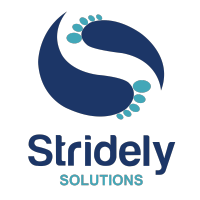In case you are planning to take your online business beyond borders, there is an array of things to consider. Starting with the products to be added or improved to the website design and structure, everything needs to be revisited to make your site ready to hit the international market.
Of all the considerations, one that leads the charts is how to optimize the international website for SEO. Like you just don’t want to launch a site in the international spectrum, you would always want to monetize the website to grab traffic and earn profits.
Going by the norms of Google Webmaster Tools, there are four different ways to decorate a website with the aim of targeting different languages. These include:
- ccTLDs (country-coded top-level domains)
- gTLDs (generic top-level domains) with sub-domains
- gTLDs with sub-folders
- URL parameters
The choice you make has a considerable impact on the SEO of the website. It determines how the local search engines view your business/brand and how does it rank the same.
Before we delve deeper, let’s have a quick rundown at the terminology of each.
- ccTLD
Acronym for Country Code Top Level Domain. This is regarded as the end part of the domain name which owns the country code. For instance: .co or uk or .fr and not .com or .org.
- gTLD
Acronym for Generic Top-Level Domain. The gTLD specifies that there is no significant or defined geographic affinity of the website and can be accessed from all parts of the globe. The commonly used domain names include: .com, .info, .gov, etc.
- gTLDs with sub-folders
These are country coded folders where the content is stored in the single domain but packed inside significant folders.
Which Structure Serves the Purpose Best?
Basically, there are three different ways to structure the site, one through ccTLD, other by subdomains and one by subdirectories/folders.
To get a better idea of who is what, let’s take an example for each:
mysite.com/uk : country-code folder.
uk.mysite.com : sub-domain
mysite.co.uk: ccTLD
The above three are examples of each of the three structures.
- Country-coded
The first is country coded on the existing site. Meaning that there already existed a site with the URL: mysite.com. .uk is the country code appended at the end of the URL to optimize it for the country.
- How Does Country-Coded Structure Benefit:
- For one, it allows website owners to make use of their existing site and extend the visibility to the region overseas.
- Centralizes all of the content enabling maintenance in a single roof.
- Reduces the cost of maintenance.
- Allow consolidation of Google Analytics in a hassle-free manner.
- Strengthens the website’s domain authority.
Another benefit of using country coded URL is the fact that they can be easily configured and geo-targeted towards a particular location.
Cons: The only downside of using country coded URL is that it may or may not behave properly when it comes to country-specific search engines.
- Sub-domain
Next, we have a structure that involves the sub-domain. Sub-domains also work on the existing site and creates an impression that the given website is the local version of a big international website. Using sub-domains makes it easier for the website owner to host sites in different regions without much effort giving it the SEO kick.
Cons: As so it appears, using sub-domains to target the SEO of the website internationally is no longer in use. The fact that users are accustomed to typing www., they often tend to sway of the website. Also, Google doesn’t vote on using sub-domains as the URL and avoids assigning domain authority to such pages.
- ccTLD
Probably the best and yes expensive, ccTLD work as a totally separate site. They have higher domain authority, can be geo-targeted and similar to the sub-domains, these websites can be hosted locally in separate regions. What’s more? The site structure is user-friendly and makes it easier for the website owner to optimize the site for international SEO.
Cons: The first and the most important being it’s the price. ccTLD domains are very expensive and also getting a local domain isn’t easy.
Making the Choice
Knowing how each of the above behaves, the question arises which one should you opt for. Whether you should go for ccTLD or sub-domains or subfolders.
As noted, ccTLD leads the charts but the fact that they are expensive, not every business can afford to pay for its services. For organizations that have both a name and fame in the industry can invest in the same. Also, organizations that have branches in the target countries and the resources to build and maintain a customized website can go ahead with ccTLD.
Websites that have good traffic and decent domain authority, looking for opportunities to expand their business across borders can opt for sub-directories. These are the enterprises that do not have the resources to run customized websites. It helps them create a consolidated backlink profile and target the international market. Such a site structure incurs minimal maintenance costs.
For organizations that wish to keep their own brand name intact and the website URL same, no matter which region they are to target their products, sub-domains serve the purpose best. If we compare this with the two mentioned above, sub-domains aren’t as effective as ccTLD or sub-directories and hence it is better to avoid them.
Conclusive Summary
SEO, without a doubt, is one of the most important considerations when it comes to an online business. Regardless of how efficient the business is or how glorious the website looks, it isn’t optimized for SEO, it is of no use. When planning to target the international market, SEO again hit the nerve. The ideal site structure is needed to make the most out of the arrangement. Given the above were three different structures, you can consider before making the choice.
Remember, it is the type of business you are running and the resources you own that determines the choice. So, be cautious before making the final call.


